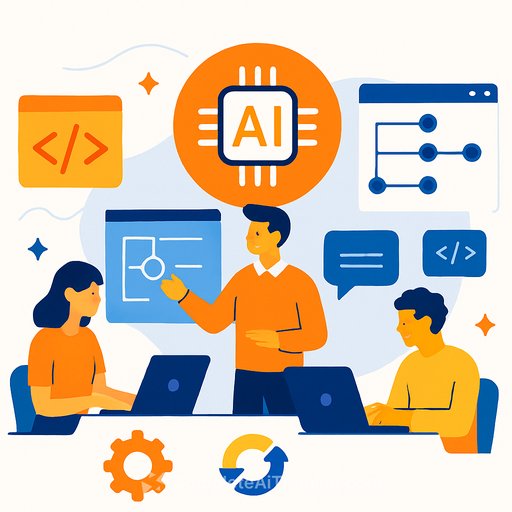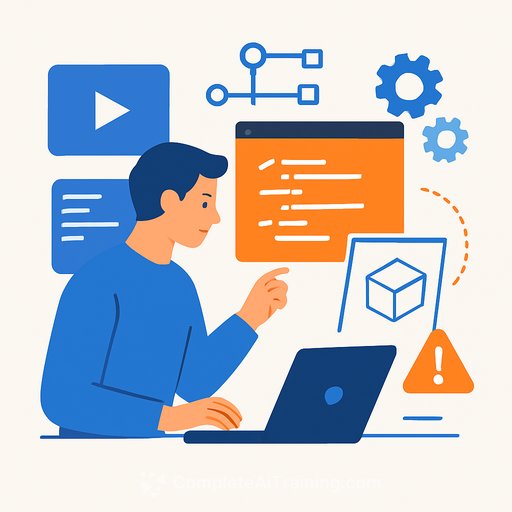AI-Driven Development Life Cycle: Reimagining Software Engineering
Business and technology leaders constantly seek ways to boost productivity, speed up delivery, encourage experimentation, reduce time-to-market (TTM), and improve developer experience. These goals push innovation in software development, increasingly fueled by artificial intelligence. Generative AI tools like Amazon Q Developer and Kiro are already changing how software is built.
Currently, organizations use AI in software development mainly in two ways: AI-assisted development, where AI supports tasks such as documentation, code completion, and testing; and AI-autonomous development, where AI attempts to build entire applications from user requirements without human input. Both approaches, however, fall short in improving velocity and software quality—issues the AI-Driven Development Life Cycle (AI-DLC) aims to solve.
Why a New Approach to AI in Software Development?
Traditional software development methods are built around human-driven, lengthy processes. Product owners, developers, and architects spend a large portion of their time on planning, meetings, and other SDLC rituals rather than core development tasks. Simply adding AI as a helper limits its potential and keeps inefficiencies intact.
To achieve meaningful productivity gains, AI must become a central collaborator throughout the software development lifecycle. This requires rethinking the entire process, not just plugging AI into existing workflows. AI-DLC introduces a methodology that fully integrates AI capabilities into software development from start to finish.
What Is the AI-Driven Development Life Cycle (AI-DLC)?
AI-DLC is an AI-centric approach emphasizing two key dimensions:
- AI-Powered Execution with Human Oversight: AI creates detailed work plans, actively asks for clarification, and defers critical decisions to humans who understand business context and priorities.
- Dynamic Team Collaboration: With AI handling routine tasks, teams focus on real-time problem solving, creativity, and quick decision-making in collaborative environments. This shift from isolated work to teamwork speeds up innovation and delivery.
These dimensions help deliver software faster while maintaining quality.
How Does AI-DLC Work?
At its core, AI-DLC follows a new mental model where AI plans work, asks clarifying questions to gather context, and only proceeds once humans validate the approach. This cycle repeats for every activity in the software development lifecycle, creating a unified and clear development process.
The AI-DLC process consists of three phases:
- Inception Phase: AI converts business intent into detailed requirements, user stories, and units through “Mob Elaboration,” where the whole team validates AI’s questions and proposals.
- Construction Phase: Building on the inception context, AI proposes architecture, domain models, code, and tests via “Mob Construction,” with the team providing real-time feedback on technical and architectural choices.
- Operations Phase: AI manages infrastructure as code and deployments using the accumulated context, with human oversight ensuring alignment and control.
Context is saved continuously in the project repository, allowing seamless transitions across phases and sessions. AI-DLC replaces traditional terminology: “sprints” become shorter “bolts” measured in hours or days, and “epics” are renamed “Units of Work,” highlighting the focus on speed and continuous delivery.
Benefits of the AI-DLC Methodology
- Velocity: AI rapidly generates and refines requirements, designs, code, and tests, enabling teams to complete work in hours or days instead of weeks.
- Innovation: With AI handling routine tasks, developers have more time to explore creative solutions and improve their products.
- Quality: Continuous clarification ensures delivered products match business intent closely. AI enforces coding standards, design patterns, and security requirements while generating thorough test suites, improving traceability from requirements to deployment.
- Market Responsiveness: Shorter development cycles allow quicker reactions to market changes and user feedback.
- Developer Experience: Developers spend less time on repetitive work and more on critical problems. They gain deeper business context and see the direct impact of their contributions.
Getting Started with AI-DLC
To begin implementing AI-DLC, consider these steps:
- Review the detailed AI-DLC white paper to understand the methodology thoroughly.
- Explore tools like Amazon Q Developer rules and Kiro custom workflows that support consistent AI-DLC adoption in your organization.
- Engage with your cloud or technology account team to discuss how AI-DLC can fit your specific environment and goals.
The AI-DLC approach offers a practical path to faster software development while maintaining quality and human insight. Organizations adopting it can transform how teams collaborate and deliver value through AI-driven processes.
For IT and development professionals eager to expand their AI skills and stay current with emerging methodologies, exploring specialized training can be valuable. Check out comprehensive AI courses and certifications available at Complete AI Training to deepen your expertise.
Your membership also unlocks:






